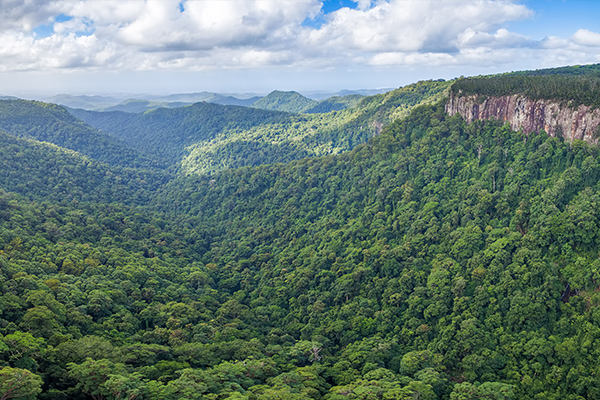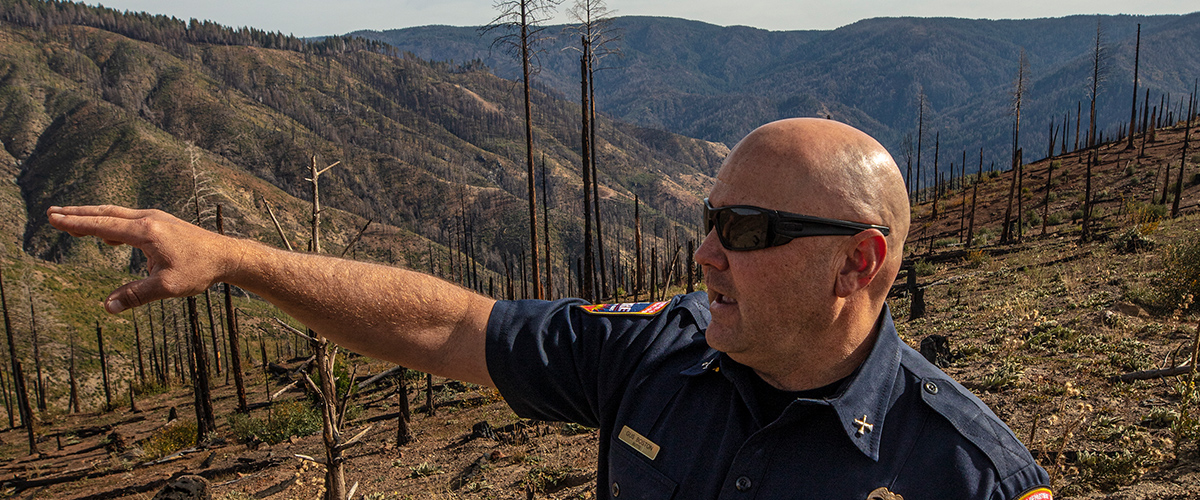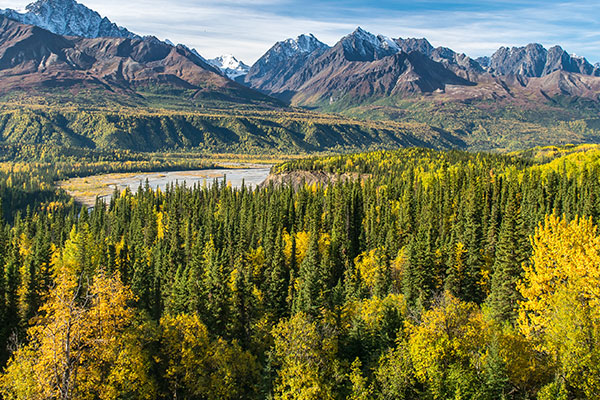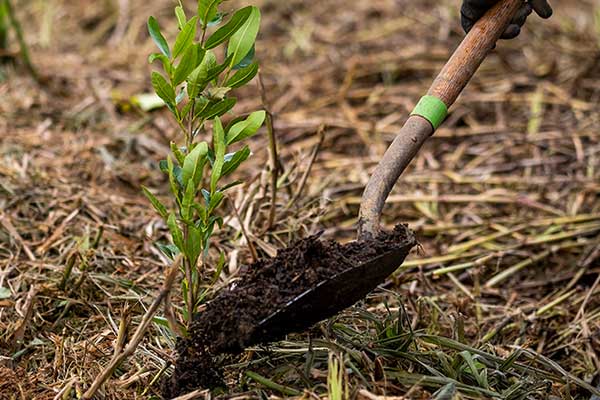A FIERY REMINDER THAT NATURE’S IN CHARGE
On November 8, just four months after the Carr Fire was finally extinguished, the Camp Fire raged to life. High winds brought down a powerline, and the wildfire spread quickly from there. It was heading directly for the communities of Paradise, Magalia, and Concow.
Right away, Boston knew this fire was different. “It was Mother Nature telling us that she is in control.”
He had fought previous fires in this watershed area as well. He knew the old fire scars had exposed the land, creating a clear path of least resistance for the wind. “I refer to it now as a gun barrel. It really has this effect that, as the wind is coming down the canyon, it compresses and increases the intensity and speed. And there’s nothing holding it back now,” he describes. With these factors, the land was ripe for a catastrophic blaze.
The first 24 hours were beyond anything he had experienced in the past, but unexpected crisis situations are what firefighters prepare for. “It was overwhelming. It really was,” says Boston. “But it’s about leadership. One of the things we’re taught is that you have to have a plan. If the plan doesn’t work, you still have to have command and control until you have a solution to the situation. I came in, developed a plan early on, started breaking divisions out, assigning resources, and working in conjunction with the incident commander. That’s what keeps people in focus given the situation that we’re in.”
And keeping focus was key. The fire was moving rapidly. People’s lives were at stake.
Training and instinct were what kept Boston and the other firefighters going. They always rely on the 10 Standard Firefighting Orders and 18 Watch-Out Situations — as well as their guts — to guide them. They prioritized saving lives, evacuating communities, and protecting homes. They faced falling powerlines and flames cutting off escape routes. They fought with everything they had. And after 17 days, the fire was finally contained.
In the days following the Camp Fire, devastating statistics began to stack up: more than 150,000 acres burned, 52,000 people evacuated, and 9,000 homes destroyed. Sadly, 85 people lost their lives, making the Camp Fire America’s deadliest fire in the last 100 years.
THE IMPORTANT INSIGHT HE NOW SHARES
Still with CalFire, Boston now spends his days planning and executing projects that can help avoid such severe fires. But his time on the front line will stay with him always.
“I was so scarred by what happened during the Camp Fire that I didn’t really speak my mind. I just shut down post-fire. Now I’m actually starting to open up,” he reflects. “I hope that people are able to take the lessons that we learned from these big events and utilize them within their communities and their forests.”
What are those lessons? Fuels (grass, shrubs, downed trees, leaves, and needles that burn in a wildfire) need to be reduced within forest cover, making a forest resilient from the impacts of wildfire. Communities need to be ready for not only the flames but also challenges like being without power or cell service during an emergency event. And nature needs a boost from forest restoration efforts.
“I live in Paradise. I know what it is to watch my community be destroyed,” says Boston. “But the fire environment is also destroying so much habitat in so many watersheds at just an extreme rate that it’s changing our environment. It’s changing our perspective on what we thought was the Western United States.”




